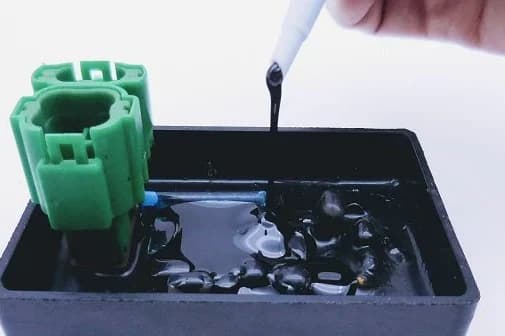
When selecting a potting compound for your application, understanding the unique characteristics of each type is crucial.
Choosing the right potting compounds is crucial for protecting sensitive electronic components from harsh environmental conditions. These materials are used to protect devices from moisture, provide insulation, and help manage heat. With options like epoxy, silicone, and polyurethane, each material offers distinct advantages depending on your application’s specific requirements. In this guide, we’ll explore the key differences between these potting compounds and help you determine which one is the best fit for your needs, ensuring long-lasting protection and optimal performance.
When selecting a potting compound for your application, understanding the unique characteristics of each type is crucial. The three main types of potting compounds commonly found in electronics manufacturing are epoxy, silicone, and polyurethane. Each offers specific advantages and is suited for different environments and performance needs. Below is a detailed breakdown of each potting compound.
Properties | Epoxy | Polyurethane (PU) | Silicone |
|---|---|---|---|
High Temp Resistance | Good (up to 180°C) | Moderate (up to 125°C) | Excellent (up to 200°C) |
Chemical Resistance | Excellent | Moderate | Moderate |
Thermal Conductivity | Good | Moderate | Moderate |
Thermal Shock | Fair | Good | Good |
Flexibility | Poor | Excellent | Excellent |
Thermal Expansion | Good | Moderate | Fair |
Electrical Insulation | Excellent | Good | Good |
Độ bám dính với nhựa | Moderate | Good | Fair |
Reworkability | Poor | Poor | Excellent |
Cost | Moderate | Low | High |

Epoxy resins have earned their place in electronics due to their robust combination of qualities. These resins offer:
High mechanical strength
, providing solid protection against wear and tear.
Resistance to elevated temperatures
, making them a good option for environments that reach up to 180°C.
Exceptional chemical resistance
, ideal for harsh environments where exposure to chemicals or solvents is a concern.
Strong adhesion
, ensuring a secure bond with substrates like metals, ceramics, and specific plastics.
For instance, epoxy potting is widely applied in electrics motor. These motors generate substantial heat and undergo constant mechanical vibrations, which can damage sensitive components. Epoxy provides the necessary insulation and protection, ensuring that the motor operates reliably over time, while also preventing electrical short circuits.
Silicone compounds excel in environments where flexibility and temperature extremes are the norm. These materials are known for:
Exceptional temperature tolerance
, operating efficiently in conditions from -50°C to 200°C.
High flexibility
, which helps absorb mechanical shocks and withstand thermal cycling without degrading.
Strong bonding to a variety of substrates
, including metals and plastics, making them highly versatile in electronics applications.
Reworkability
, meaning that silicone can be more easily removed and reapplied compared to other potting compounds, making it ideal for applications where future repairs or modifications are anticipated.
In the LED industry for example, silicone is often chosen because these devices face rapid temperature changes and require materials that can adapt without cracking. The flexibility and temperature stability of silicone ensure that the LED’s circuitry is protected while also allowing heat to dissipate, preserving performance in harsh environments like outdoor lighting or automotive headlights. Additionally, its reworkable nature allows for easier access to components if adjustments or repairs are needed down the line.
Polyurethane, with its elastomeric nature, balances flexibility and mechanical strength. Its benefits include:
Moderate temperature resistance
, functioning well in environments up to 125°C.
Adjustable curing times
, which makes it easier to customize the processing speed to fit manufacturing timelines.
Cost-effectiveness
, often priced lower than silicone, making it an attractive option for cost-conscious applications.
For instance, polyurethane finds favor in automotive sensors, where components are exposed to constant vibration and moderate temperature shifts. Its flexibility absorbs vibrations effectively, ensuring that the sensors remain intact and functional, while offering a relatively low-cost solution.
Go back